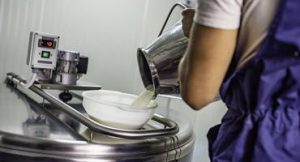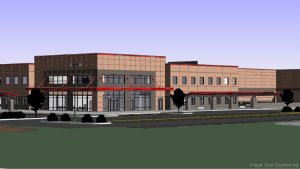
Butter prices rose 24.6% in August compared to last year while the overall cost of groceries increased 13.5%.
Cheese, milk and other dairy prices are expected to remain elevated as well due to tight supplies and strong demand.
USDA recently estimated average prices of $2.88 per pound for butter, up from $1.73 last year, $2.10 for cheese compared to $1.67 a year ago and an all-milk price of $25.60 per hundredweight in October versus $18.53 in 2021.
“The whole dairy price situation was generated from events starting the previous summer,” said Peter Vitaliano, vice president of economic policy and market research for the National Milk Producers Federation.
“Milk production went through a rate of increase of 5% year over year, but then it started dropping and went negative,” he noted. “Coupled with recovering demand, it drove the price of key dairy products up, but that didn’t bleed through to the retail level until this year.”
Butter prices averaged $3.08 per pound through the week ending Sept. 10 as a reduction of milk output reduced the allocation of it to produce various dairy products, particularly butter.
The amount of butter in storage in August (282 million pounds) slipped 22% compared to the same time last year. But, while supplies are much tighter, Vitaliano doesn’t foresee a “butter shortage” this baking season despite concerns to the contrary.
“When you say there’s a butter shortage, to me it means that somewhere in the country you won’t see it on the supermarket shelf,” Vitaliano said. “That’s not the case. Butter is available. It’s just the price has gone up.”
The cost of most dairy products increased as milk prices climbed. USDA in October pegged average prices of $21.90 per hundredweight for Class III milk, up $4.82 from last year, and $24.60 for Class IV milk compared to $16.09 last year.
Issues such as record feed prices, challenges from ongoing drought in many parts of the country, the high cost of replacement cows and difficulty securing farm labor all contributed to the shrinking dairy cow herd and higher prices.
“There’s a lot of constraints to expand milk production. We went through a year in which farmers were not expanding,” Vitaliano said. “The cost of producing milk is at an all-time high.”
There were some positive signs, recently, though as milk output increased 1.6% in August. Milk cows on farms averaged 9.416 million head in July, 1,000 more than the previous month but 67,000 fewer than in July 2021, USDA reported.
And demand for dairy products remains strong, which is also bolstering prices.
“Consumption has been affected somewhat by higher prices, but dairy is generally price inelastic,” Vitaliano said. “When the price goes up, people still buy it.”
Meanwhile, the average price of a 40-pound block of Cheddar cheese recently declined by 12 cents.
“The U.S. the last several months has been the lowest-cost cheese supplier of any of the major exporting countries, so we’ve seen a big increase in exports,” Vitaliano said. “I’m looking for exports to be a growing share of the total market, which is already approaching 20% of total (dairy) production.”






















